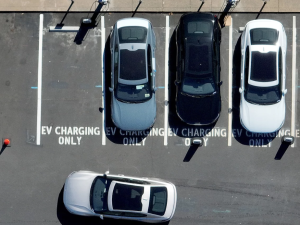In the upcoming year of 2024, prospective electric car buyers will encounter a mix of favorable and challenging changes in the federal tax credit landscape. The encouraging news is that accessing the substantial tax credit for electric vehicles will become more straightforward. However, the downside is that fewer electric vehicles are anticipated to qualify for the full $7,500 credit.

These tax credits play a pivotal role in the Biden administration’s strategy to accelerate the transition to electric vehicles and reduce carbon emissions stemming from the transportation sector. Nevertheless, the government is also emphasizing the importance of fostering job growth in the United States by urging companies to establish a domestic supply chain. Balancing these dual objectives can create complexities for both consumers and automakers.
For those contemplating the purchase of an electric car in 2024, understanding the evolving electric vehicle tax credit system is crucial. A significant modification involves a new option allowing buyers to receive the credit as a rebate at the time of purchase. Instead of waiting to claim the credit when filing taxes, this adjustment streamlines the process by making the credit available as immediate cash or a reduction in the vehicle’s cost on the day of purchase.
Here’s how it works in simple terms: Once the eligibility for the tax credit is confirmed, the dealer provides the buyer with the credit upfront. If, for instance, the credit amounts to $7,500, the dealer deducts that amount from the vehicle’s cost as though the buyer had paid in cash. Subsequently, the dealer submits the necessary documentation to the IRS, and the IRS reimburses the dealer the $7,500. In essence, this new approach means that the tax credit is seamlessly integrated into the dealership transaction.
However, certain conditions remain unchanged for the buyer. It is imperative to confirm compliance with the income cap, affirm that the vehicle is intended for personal use, and validate that it will be used within the United States. The income cap is determined based on “modified adjusted gross income,” reflecting income after specific deductions, typically found on Line 11 of the 1040 form. Individuals with foreign income or income from Guam or Puerto Rico will need to include those in their calculations.
In navigating the evolving landscape of electric vehicle tax credits in 2024, potential buyers are advised to stay informed about these changes, assess their eligibility, and consider the option of receiving the credit as an upfront rebate, providing a clearer and more immediate benefit at the point of purchase.
Read Also – Chaos Erupts at Grand Central Terminal: Alleged Racist Stabbing Leaves Two Teens Injured




